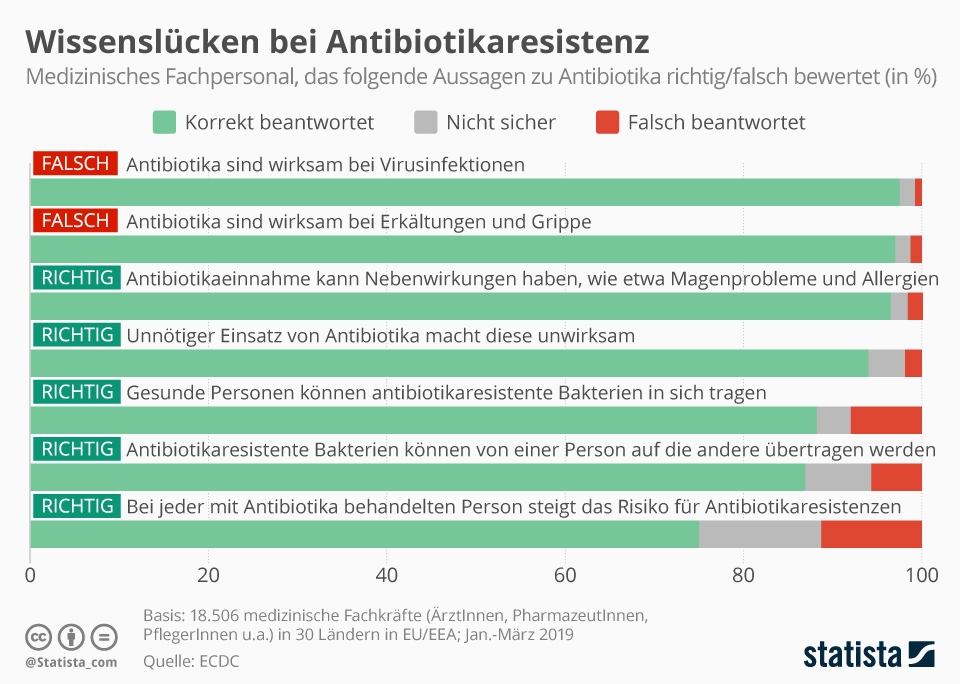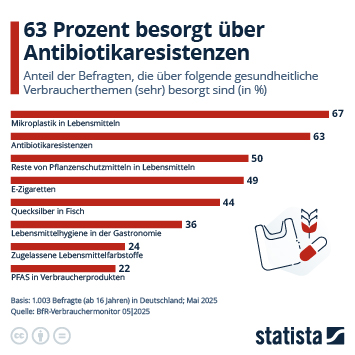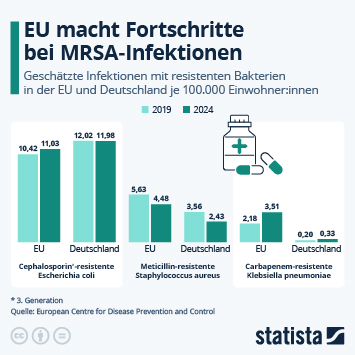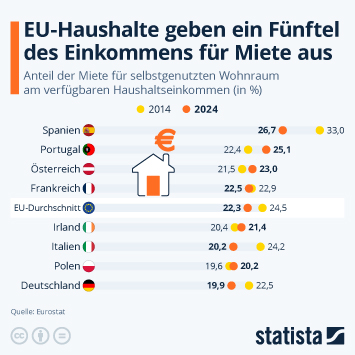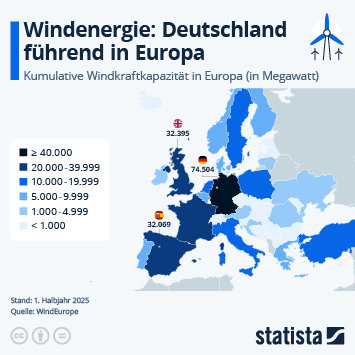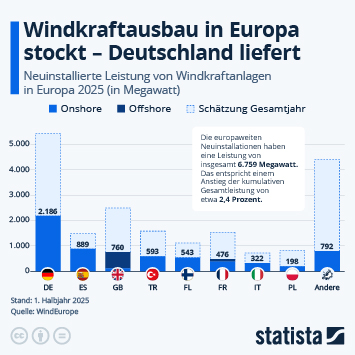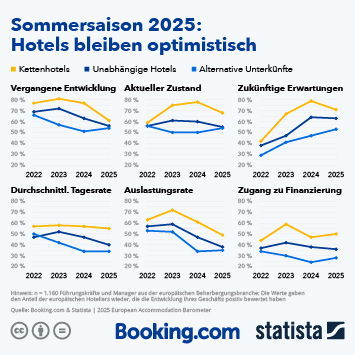Medizinisches Fachpersonal in Europa und im europäischen Wirtschaftsraum weiß zu wenig über Antibiotika, speziell über Antibiotikaresistenzen. Das zeigt eine aktuelle Untersuchung des Europäischen Zentrums für Krankheitsprävention und -kontrolle (ECDC). Mehr als 18.000 Befragte aus verschiedenen medizinischen Berufen nahmen an der Befragung teil. Generell seien die Kenntnisse und das Bewusstsein hoch, so das ECDC. Allerdings variiert es deutlich zwischen den Ländern und den einzelnen Berufen. Die deutschen Befragten landen mit ihrem Wissen im oberen Mittelfeld.
Wie die Grafik von Statista zeigt, ist nahezu allen Befragten klar, dass Antibiotika nicht bei Viruserkrankungen helfen und nicht bei Erkältung und Grippe zum Einsatz kommen sollten. Größere Unkenntnisse gibt es im Bereich der Antibiotikaresistenzen, die zu einem immer größeren Problem werden. Laut des Robert-Koch-Instituts hat sich die Krankheitslast durch Infektionen mit antibiotikaresistenten Erregern in Europa und auch in Deutschland deutlich erhöht. Jährlich erkranken in der EU etwa 670.000 Menschen an Infektionen durch antibiotikaresistente Erreger, 33.000 versterben pro Jahr daran. In Deutschland liegen die Zahlen bei knapp 55.000 und 2.400.

